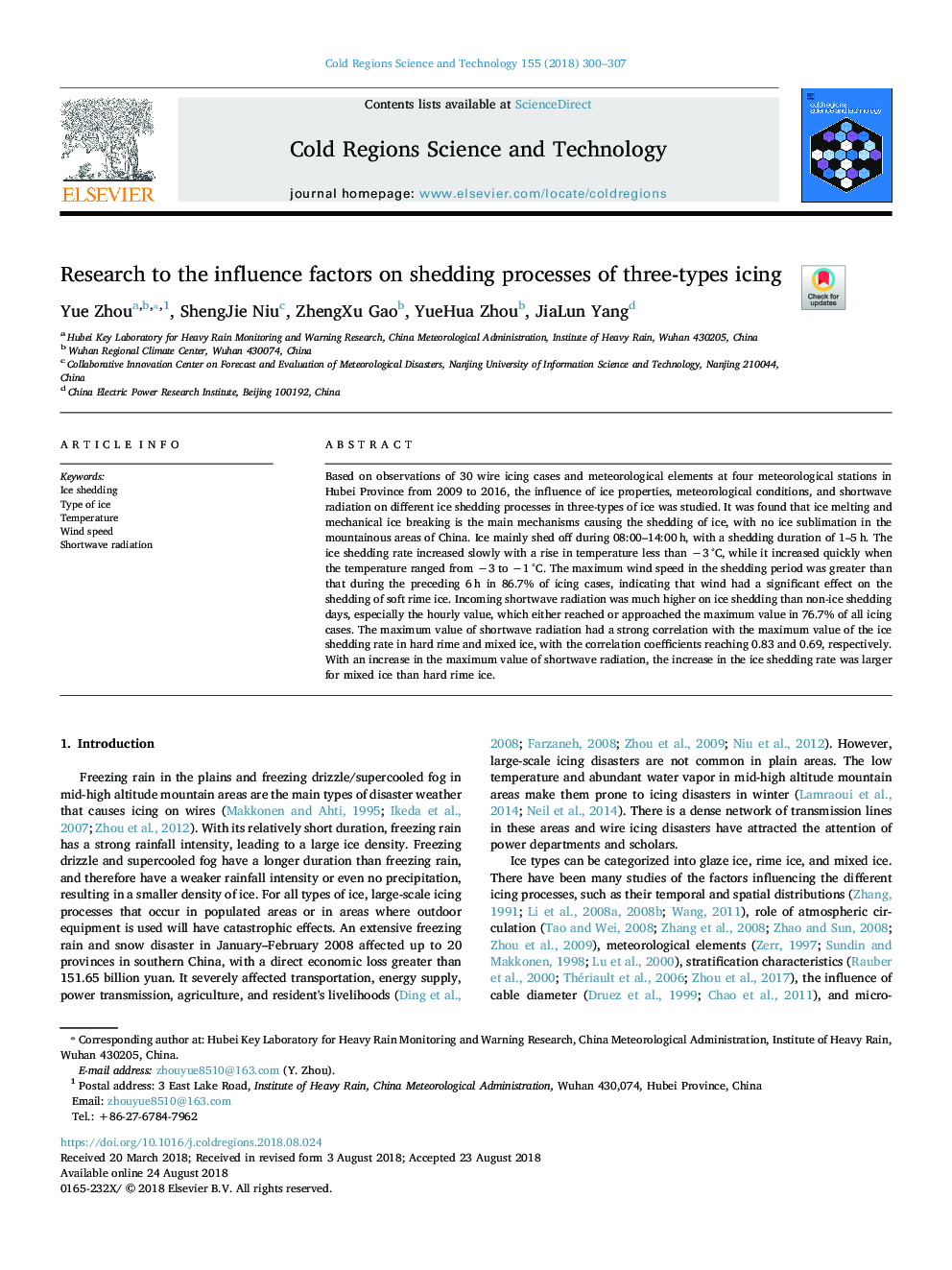| Article ID | Journal | Published Year | Pages | File Type |
|---|---|---|---|---|
| 10119895 | Cold Regions Science and Technology | 2018 | 8 Pages |
Abstract
Based on observations of 30 wire icing cases and meteorological elements at four meteorological stations in Hubei Province from 2009 to 2016, the influence of ice properties, meteorological conditions, and shortwave radiation on different ice shedding processes in three-types of ice was studied. It was found that ice melting and mechanical ice breaking is the main mechanisms causing the shedding of ice, with no ice sublimation in the mountainous areas of China. Ice mainly shed off during 08:00-14:00â¯h, with a shedding duration of 1-5â¯h. The ice shedding rate increased slowly with a rise in temperature less than â3â¯Â°C, while it increased quickly when the temperature ranged from â3 to â1â¯Â°C. The maximum wind speed in the shedding period was greater than that during the preceding 6â¯h in 86.7% of icing cases, indicating that wind had a significant effect on the shedding of soft rime ice. Incoming shortwave radiation was much higher on ice shedding than non-ice shedding days, especially the hourly value, which either reached or approached the maximum value in 76.7% of all icing cases. The maximum value of shortwave radiation had a strong correlation with the maximum value of the ice shedding rate in hard rime and mixed ice, with the correlation coefficients reaching 0.83 and 0.69, respectively. With an increase in the maximum value of shortwave radiation, the increase in the ice shedding rate was larger for mixed ice than hard rime ice.
Related Topics
Physical Sciences and Engineering
Earth and Planetary Sciences
Earth and Planetary Sciences (General)
Authors
Yue Zhou, ShengJie Niu, ZhengXu Gao, YueHua Zhou, JiaLun Yang,
